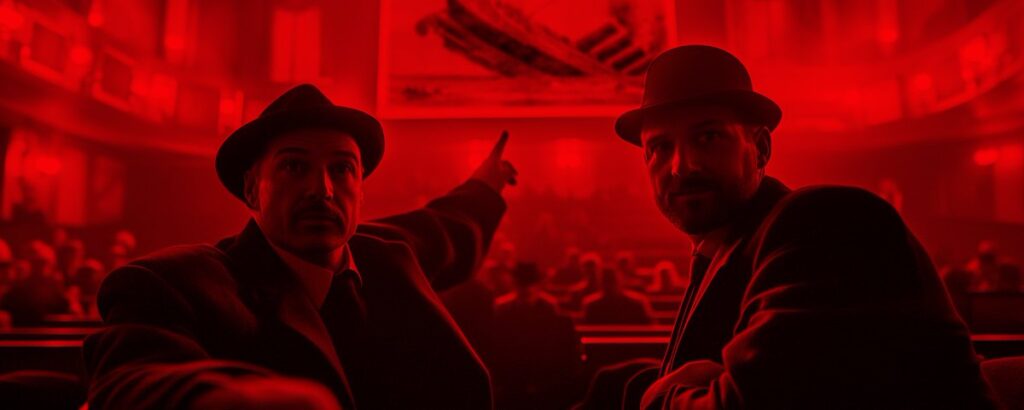
Architects of Awareness; Mass Media as a Method of Manipulation Part 1
What is considered mass media at this point? What effective methods are used for transmission? How is messaging crafted to affect the mind, thoughts, and subconscious? Who owns and controls content, and what do they think about you? Finally, how does one negate exposure to malignant propaganda and empower discernment?
In this series we’ll approach all of these questions and more, focusing on comprehensive deep dives into specific components, mediums, and genres that constitute mass media and its lingering manifestations on the psyche. We’ll also consider alternative approaches in navigating the evolving cyberscape of new media, in pursuit of truth.
What is Mass Media?
Let’s first consider the definition according to the Oxford English Dictionary (OED): “The main means of mass communication, such as newspapers, radio, and television, and (from the later 20th century) content accessed via the internet.” According to the OED, the earliest usage case for mass media is from 1923, in the writing of S. M. Fechheimer, A Jewish-German immigrant who settled in Cincinnati, OH to monopolize a uniform manufacturing empire for state agents such as military, and police. Concerned with advertisement and government contracts, Fechheimer describes the term, relevant still to today’s digital landscape, “Mass media represents the most economical way of getting the story over the new and wider market in the least time.”
Trial by Torpedo Fire
Let’s look at one of the first profound uses of mass media in the early 20th century. 1918 was a time of great geopolitical uncertainty, as World War I was well underway in Europe. Plans were drawn up to escalate the global conflict further and involve the US, however, despite efforts to attach a hostile narrative to Germany, the vanguard of The Central Powers, the US public was reluctant to enter the bloody conflict. Interested parties, such as bankers, industry tycoons, and globalists of the day, who desired a greater war needed a catalyzing event to shift the narrative influencing public opinion to a pro-war stance, rather than cautiously apprehensive. Sound familiar?
On May 7, 1915 during the British naval blockade, a German submarine, U-20, intercepted and torpedoed the RMS Lusitania which was en route from America to Europe, effectively destroying the vessel. The Lusitania was a clandestine munition transport masquerading as a luxury passenger ship (The vessel’s original designation and purpose). While legitimately accommodating passengers, the ship’s sizable holds were filled for their true purpose of the voyage: the transport of American manufactured munitions to be delivered to allied belligerents. It was, to them, a suitable military target insulated by unsuspecting and ill-fated civilians.
THE SINKING OF THE LUSITANIA 1918 – Winsor McCay
On 6 April 1917 Woodrow Wilson, arguably the worst president in US history, declared war on Germany, much to the exuberance of the aforementioned financier villains. As the American war drum beat louder, Winsor McCay, an animator and employee of William Randolph Hearst, defied his anti-war employer and through his connections, released his short animation The Sinking of The Lusitania in 1918. There is no evidence to support that Winsor McCay was formally employed by the United States government or military. However, it’s worth noting that Winsor’s father was a member of King Solomon’s No. 43 Masonic Lodge in Woodstock, NY and Winsor himself received full Masonic rites at his funeral. I will further explore the connections of fraternal societies, clandestine organizations and agencies along with their tell-tale trademarks in media as this series progresses.
A concerned citizen or unwitting dupe?
One can speculate as to whether McCay intentionally lied via omission since not a single title card in his animation mentioned the primary mission of the Lusitania. At best, he played the perfect useful idiot in his emotive, uninformed response to the event. Foregoing any critical thinking, and lacking pertinent details, McCay used his talents to create a widely circulated reel featuring the depictions of the sinking ship. This was the first on-screen war propaganda piece with wide circulation, all to influence perception. The animation was displayed along with old newsreels popular at the time, played before features. Unsuspecting American audiences were rattled, as the age of cinema was still in its infancy.
While American “doughboys” were late to the party, military and civilian casualties of WWI are estimated to be around 40 million, mainly European. The alliances formed from the ashes of the Great War, such as the League of Nations, coupled with the crippling Treaty of Versailles were all decisive factors in perpetuating the war through economic starvation and were directly responsible for continued unmitigated carnage throughout WW2. The influence and power of one animation from a single artist is staggering when considering ramifications upon the 20th century and the lasting effects felt today.
The more things change, the more they stay the same.
Winsor unwittingly developed the absolute template, a formula. McCay’s efforts were the precursor to the technology rolled out to shift our experiences now. The natural progression is a multi-headed hydra attacking humanity’s collective conscience on a staggeringly advanced, persistent and global scale. Such manipulation is directly applicable to events in Ukraine, Israel, 9/11, The War on Terror and countless other examples. Just as effectively, it can be applied directly to the erosion of our civil liberties that we see here in America, along with many other precisely crafted cultural shifts.
The media is the first weapon deployed to destroy targets inconvenient to the regime, with the purpose to either completely eradicate, or reconstruct what once was, into a twisted perversion of its former self. We’ll explore the many facets and techniques used within media to manipulate societies, from the iron-fisted approach to more clever perceptual methods with lasting effects. Mass media is a wildly broad topic that can be difficult to wrestle down, both conceptually and in scope. In its rudimentary form, it is a coordinated mind control apparatus. Central to these efforts to dominate the narratives, are those who understand precisely how the mind works, The Architects of Awareness.

Chris Vellrath is an independent artist, designer, photographer and award winning filmmaker. Throughout his career, he has aspired to integral involvement in numerous freedom based endeavors from documentary projects, direction and production of truth seminars and a wide variety of ventures encompassing topics such as liberty, geopolitics, conspiracy and the pursuit of occult knowledge.

Leave a Reply